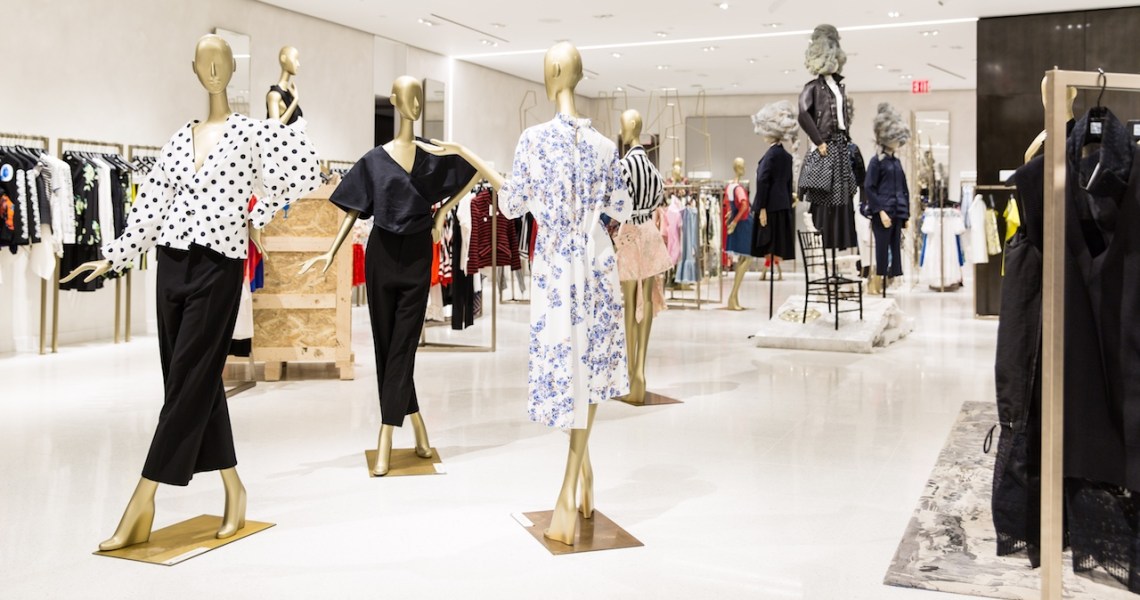Fashion companies are contending with a tough end to the financial year, which shows no sign of letting up. Layoffs and a worsening economic outlook created by inflation are leading to store closures in traditional retail environments. At the same time, there’s a need among brands to address the growth of C-suite stagnation, as outsiders shake up textbook industry formats for the better. Here’s a breakdown of three trends set to negatively impact the industry well into this year.
Cost-cutting layoffs
Looking to cut costs, numerous brands, including Everlane, H&M, PVH and Nordstrom, have recently conducted layoffs of 10-15% of their corporate staff. DTC brands are being hit particularly hard, with basics brand Everlane laying off 17% of its 175 corporate employees, as well as reducing staff in three of its 11 store locations. This is the second time in the last two years that Everlane has laid off staff. It previously laid off hundreds of retail and customer service employees in March 2020 in a reported union busting effort.
“A few of the so-called disruptor brands, like Stitch Fix and Everlane, are dealing with an ardent questioning of the validity of the DTC business model,” said retail analyst Steve Dennis. “They are dealing with a fundamental overestimation of what their total addressable market was. [For those that have gone] public, they first received a lot of venture capital money, and it engaged this belief that these big brands can be built largely online-only. This is now just a reckoning of what was a fundamentally flawed investment premise.”
DTC fashion brands are following in the footsteps of other once-DTC-only brands by expanding their sales channels. For its part, Glossier was touted as a DTC success story, but it went omnichannel via a Sephora partnership last year.
Jamie Gill, founder of non-profit incubation platform The Outsiders Perspective, aimed at increasing representation in the fashion industry, said that while the redundancies will hit hard globally, they should not deprioritize positive change in the industry.
“In times of turmoil, it is imperative to have a fresh perspective, therefore the argument for incorporating talent from a diverse background becomes even stronger,” said Gill. “As the pandemic has taught us, times of uncertainty force us to dig deep as business leaders and reshape business to adapt to the evolving consumer sentiment and cement new business priorities.”
Worsening economic outlook leading to store closures
Inflation, a recession and the war in Ukraine have led to market disruptions and a worsened economic outlook for the first half of 2023. As retailers look to build up cash reserves and reshape their value proposition, they’re seeing extraneous costs focused on two areas: people and stores. Although 2022 was a better year for in-store fashion retail, following a consumer focus on e-commerce during the pandemic, key in-store shopping events like the holiday season underperformed due to inflation. Now, Macy’s, for one is closing four of its full-line stores. Department stores including Kohl’s and Nordstrom are also set to shutter stores in 2023, according to UBS analysts.
“If you’re a moderate department store retailer or a brand that is more moderately priced, and you don’t have amazing value or you’re not an in-demand brand, then you’re already in trouble,” said Dennis. “Brands like H&M may not be as troubled as Macy’s or Kohl’s or JCPenney, which seem to have struggled to justify their market position. When the [market] flattens or retrenches a little bit, then it becomes all about market share and how to get a bigger piece of the pie.”
C-suite stagnation
As brands re-evaluate their priorities in a shifting economy, many are making changes at the C-suite level. At Lacoste, the brand is moving to a collective creative model, as Louise Trotter steps down as creative director. Last year, Gap Inc.’s Sonia Syngal, MatchesFashion’s Paolo De Cesare and Lyst’s Chris Morton all left their C-suite positions in July. Both Gap and Lyst also reported layoffs in the last few months.
Tricia Logan, managing partner of the global consumer and retail practice at executive search and consultancy DHR Global, said she expects the heightened C-suite activity in the last year to continue in 2023, based on CEO shifts in the past week alone. DHR Global’s clients range from privately held mid-market companies to multi-billion-dollar publicly traded organizations, and have had increased hiring needs across the spectrum.
“While it isn’t uncommon to see changes in the early part of the year as companies come out of the fourth quarter, early indicators suggest that we will see increased movement,” said Logan. “Economic uncertainty, a renewed focus on omnichannel and ESG priorities will be top of mind for many companies, ultimately leading to new hires and/or changes among incumbents. Two of the biggest opportunities right now are around the needs for innovative leaders and organizational restructuring.”
Dennis expects that even traditional department store leaders will start targeting fresh profiles when looking to reinvent their C suites.
“Traditional retailers that have been around for a while have continued to manage themselves and seek leaders that fit into a pretty conventional framework. That hasn’t led to dramatic transformations for some of the brands, which need a more diversely experienced leader,” he said.




